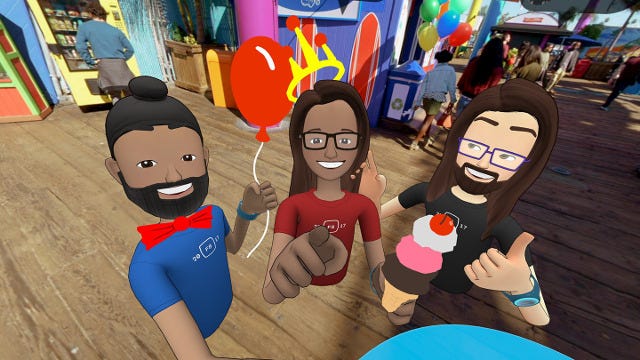
A loneliness epidemic is impacting countries around the world. According to the Economist and Kaiser Family Foundation, 22% of adults in the United States and 23% of adults in the UK report feeling lonely all the time or often. A reported 15% of adults in Japan and 14% in Mexico have no social interaction with people outside of their family. The cause of this epidemic is unknown, but a host of theories exist including declines in religion, a rise in social media, and more. As levels of loneliness soar throughout the world, researchers are discovering that loneliness has real negative health effects. Luckily, a potential cure exists in virtual reality.
Health Impacts of Loneliness
To my surprise, loneliness has significant negative physical effects on a person’s health. I found this shocking since loneliness is a subjective feeling compared to objective ailments like infections. However, the health impacts of loneliness can be just as powerful as infections.
Loneliness can cause:
Cold symptoms to feel worse
A 2017 study showed that 39% of people who were lonely and had a cold reported much more severe symptoms than those who were not lonely.
Wildly varying eating habits
A 2012 study reported that the same characteristics found in someone experiencing loneliness were also found in people with eating disorders such as binge eating disorder (BED), bulimia, and anorexia.
Social situations to induce more anxiety
Julianna Holt-Lunstad, a psychologist at Brigham Young University, says that lonely people can perceive social situations as more threatening than they are. This causes them to have a difficult time connecting with others.
Stress
A 2016 article from PsychologyToday reported that lonely individuals recount higher levels of perceived stress.
Depression
A 2006 study found that people who felt more lonely also reported feeling more depressed.
Increased inflammation
In 2007, a UCLA professor discovered that the gene group responsible for the body's inflammatory response was more active in people that are lonely. Having high inflammation, the immune system’s response to injury or stress is unhealthy for long periods of time.
Early death
Acute loneliness has been linked to an increased risk of stroke and cardiovascular disease. Incorrect eating leads to inflammation and high cortisol levels. This, in conjunction with a myriad of other loneliness symptoms, can cause a shortened lifespan.
Even though that section was bleak, it’s important to recognize that loneliness is a real problem that should be taken seriously.
What Is Causing The Loneliness Epidemic?
The world’s increasing loneliness epidemic has no known cause. It is possible that the number of lonely individuals simply appears much higher than in previous years due to researchers testing more for it. Regardless of the increased testing, a number of other potential factors could be responsible.
Familial bonds are weaker. The baby boomer generation had fewer children and more divorces than the previous generation.
Work has become increasingly transient. People tend to move for work much more than previous generations. This is especially prevalent among young adults who will do things like work in a specific city for a few years only to move to another city a few years later while pursuing a different job.
Less religiosity. People in developed countries are less religious and miss out on the community from places like church, synagogue, mosque, etc.
Social media usage. Despite having “social” in its name, the high use of social media has been linked to increased loneliness. This same study found that limiting social media use for a maximum of 30 minutes per day actually increased users’ well-being and reduced feelings of loneliness.
Decline in face-to-face interactions among adolescents. The decline in face-to-face interaction can be attributed to our increased use of technology and the ability to easily communicate via texting, voice calls or video calls.
Status And Meaning Through Virtual Worlds
(Warning: This section is mostly speculation and should be taken with a grain of salt.)
Another hypothetical cause of the loneliness epidemic is a lack of meaning in peoples’ lives. Unfortunately, social media highlights unattainable things such as extreme wealth, unrealistic happiness, and impractical lifestyles. A lower to middle-class person with a 9-5 job may be saddened to realize they will never achieve such a lifestyle. Many feel lucky to simply afford raising their family. With healthcare, housing, childcare, education, and other costs skyrocketing, it’s easy for people to get trapped in negative thinking patterns and become hopeless.

Virtual reality, and more broadly games, can help give people a greater sense of meaning. Playing a video game or entering a virtual world allows people to befriend other players and become a member of a specific community, guild, or nation. For example, in World of Warcraft players can form groups to defeat a powerful boss. Even if relationships and actions are virtual, the meaning, community, and sense of accomplishment people experience is real. The combination of social interaction and working towards a common goal can lead to increased happiness and life meaning.
Will Virtual Reality Replace Face-To-Face Interaction?
While nothing today can replace face-to-face interaction, graphic capabilities have increased exponentially from the days of Super Mario. The first graphic below is from Super Mario in 1980 and the one underneath is from Red Dead Redemption in 2015.

If graphics are already this amazing, it’s difficult to fathom what future graphics can look like. In fact, the company 8i is working on creating ultra-realistic 3D holograms for virtual reality. The future of virtual world graphics will look similar and only get better as technology advances.
As graphics and body tracking software progress to levels where users can hardly discern what is real vs virtual, “face-to-face” communication could happen within virtual environments. The brain can be tricked into thinking that the communication was in person. This hyperrealistic technology might actually increase sociability. For example, reality has many social boundaries compared to virtual environments where it’s normal to immediately interact with strangers. It is too early to definitively know if hyper-realistic virtual reality can replace face-to-face social interaction, but the future looks promising.
Making Real Connections Via Video Games
Despite theories that video games induce violence or antisocial behavior, research shows that it actually increases social behavior and allows people to form real human connections. In 2016, Columbia University's Mailman School of Public Health conducted a study that showed students who play video games have higher intellectual capabilities and social skills compared to peers. Note, there was no link between video game usage and mental health issues. This is likely because most games today have major social components. While this study focused on video games and not VR specifically, I imagine there is a massive overlap. As more sociability studies are conducted, I believe we will conclude that virtual experiences provide an ideal environment for social interaction.
There are countless stories about people meeting in video games and becoming friends in real life. Here is an amazing story about two people meeting in World of Warcraft and becoming best friends. Here is another story about a couple who met in the virtual world, Utherverse, and got married. Forming real human connections in video games and virtual environments will increase as communication technology improves and gaming becomes more social. Improvements are inevitable since game developers are motivated to enhance the game to attract more users. Inadvertently, game developers are the heroes of the loneliness epidemic as they work to create more engaging and social worlds.
Virtual Reality Therapy
Virtual reality is currently being used as a form of treatment for a vast number of ailments, such as:
Depression
Eating disorders
Chronic pain
Autism
Post-traumatic stress disorder (PTSD)
Memory loss
Interestingly, several of these ailments are specifically related to loneliness. One study examined five different clinical trials that used virtual reality as a depression treatment and found that 4/5 studies showed it significantly improved depression-related symptoms. Limbix, a Palo Alto-based company, creates virtual reality experiences purely for therapeutic purposes. Their programs are used to treat anxiety, depression, addiction, pain, trauma, and phobias. In the future, perhaps they will develop treatments that target loneliness. Or perhaps more people will engage in virtual worlds and simply cure themselves.
Research, hardware, software, and graphics all have a long way to go, but even at this early stage, virtual reality is proving beyond constructive for humans. If virtual reality can even slightly reduce the levels of loneliness in the world, it would be a massive win for humankind. The use cases for VR are essentially unlimited, but if we focus on its social impact to build applications that combat loneliness, it will be an epic force of good.

If you liked this content please subscribe to my newsletter, Zima Red, and give me a follow on Twitter. Stay tuned for more articles on unique digital assets and all things virtual. 😎
